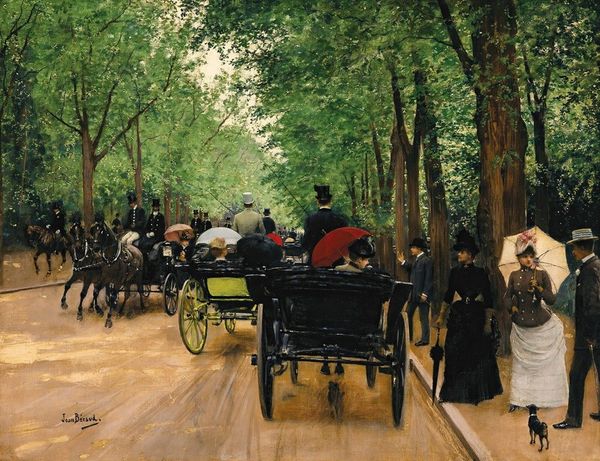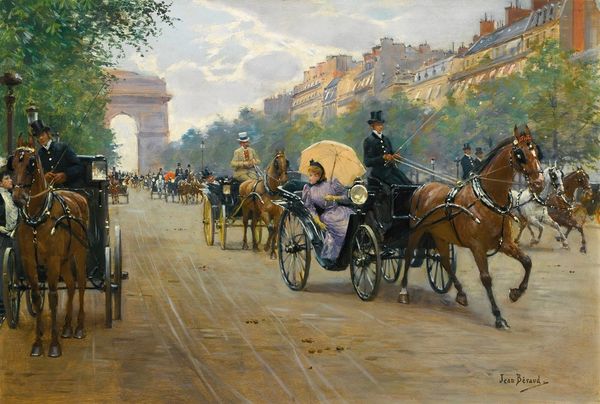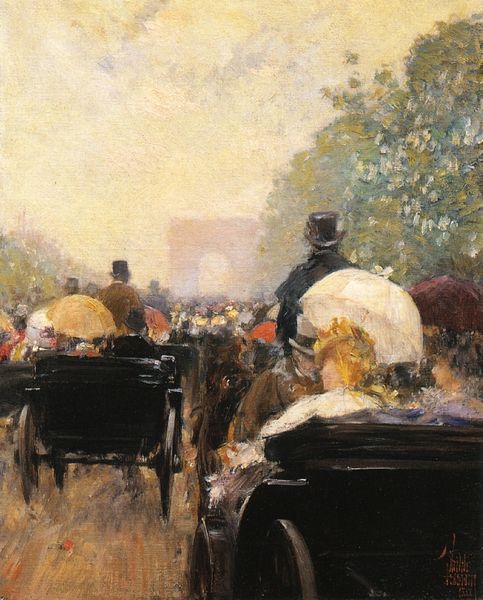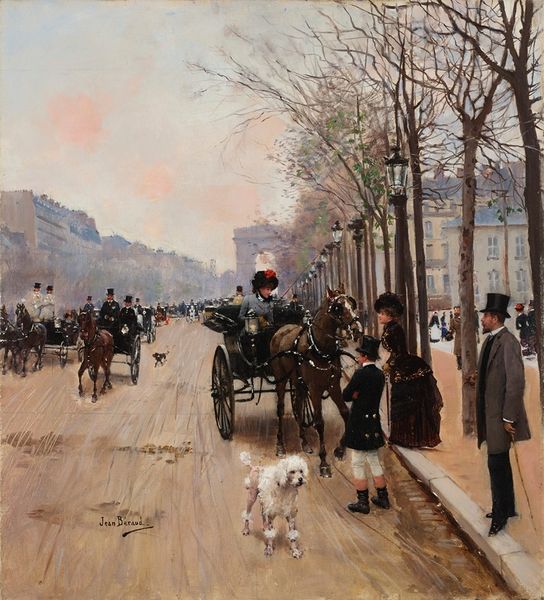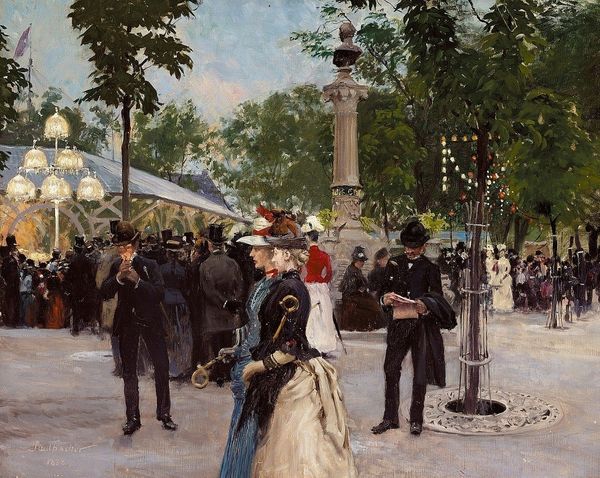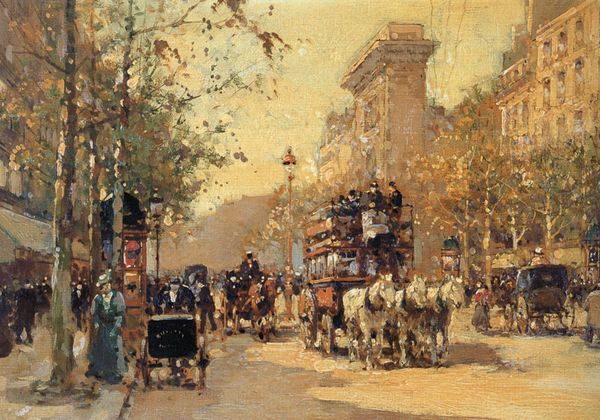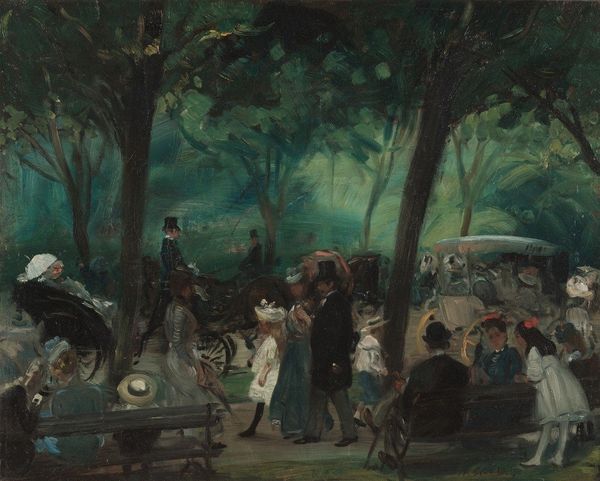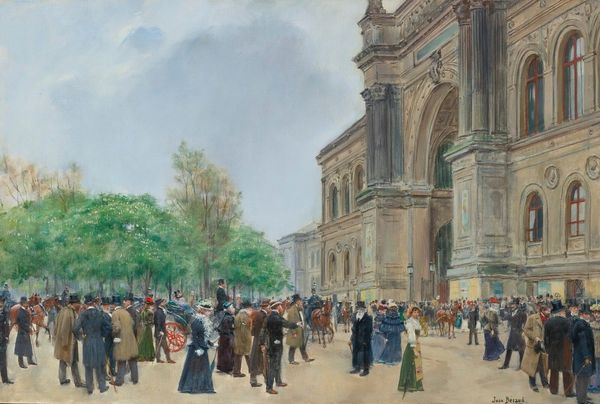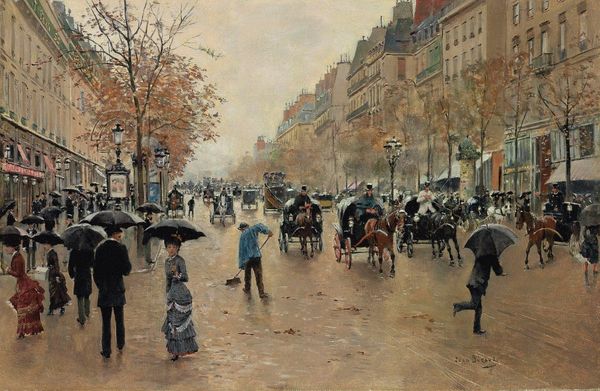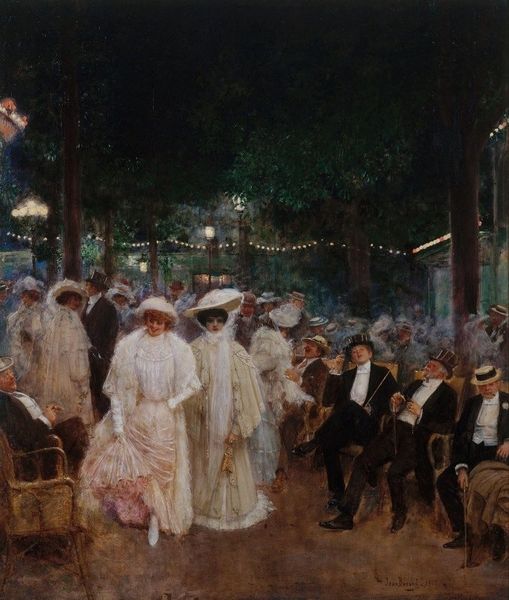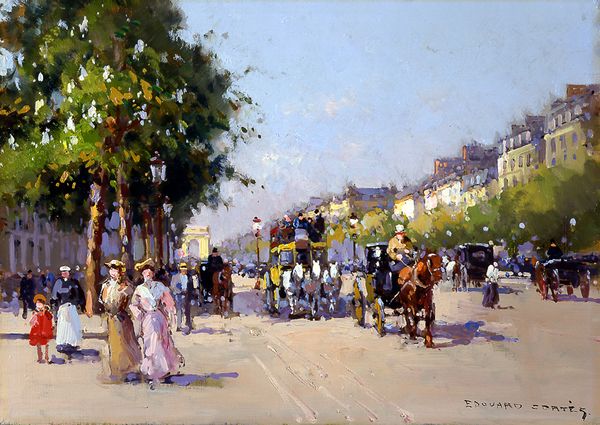
Copyright: Public Domain: Artvee
Jean Béraud's painting, *Sur les Champs Élysées*, captures a bustling Parisian scene, likely rendered with oil on canvas, though this image lacks medium specifics. The composition is structured by a strong diagonal leading into the distance, populated with carriages, pedestrians, and lush trees, all rendered in soft, muted tones that suggest a hazy atmosphere. This arrangement evokes a sense of depth and dynamism. Béraud’s brushstrokes play with the formal qualities of light and texture. The indistinct rendering of the figures and objects creates an effect akin to early photographic techniques, reflecting the late 19th-century fascination with capturing fleeting moments. The light conditions produce a certain flattening of the image that engages with structuralist inquiries into visual representation and reality. We could see it as a semiotic system where each element—carriage, tree, figure—functions as a sign contributing to a complex cultural narrative. Consider the painting's visual structure: how the diagonal perspective not only defines the space but also directs the viewer's gaze, engaging with perception itself. The soft, diffused lighting and loose brushwork contribute to a dreamlike quality, almost destabilizing our perception of a fixed, knowable reality. This painting offers more than just a scene; it presents a commentary on the transient nature of modern life.
Comments
No comments
Be the first to comment and join the conversation on the ultimate creative platform.


